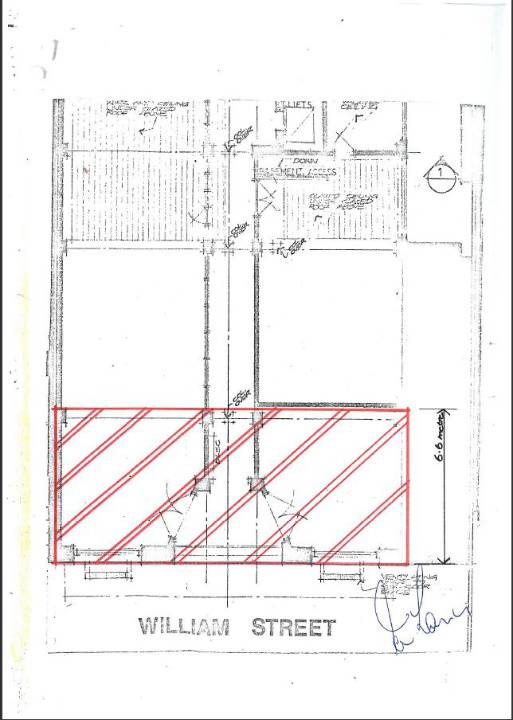| Back to search results » | Back to search page » |
|
QUEENSLAND BUILDING
Location84-88 WILLIAM STREET MELBOURNE, MELBOURNE CITY
File Number603238 [ 1 - 2 ]LevelRegistered |
|
Statement of Significance
What is significant?
The Queensland Building was constructed in 1912-13 as the State Headquarters of the Queensland Insurance Company. Butler and Bradshaw were the architects. Walter Butler was an English architect who had been trained within the Arts and Crafts movement. The Queensland Building is a symmetrical six storey office building on a steeply sloping frontage and is constructed of brick with a sandstone veneer facade. The architectural style combines elements of classicism with the traditions of the Arts and Crafts movement. The form of the building is an exaggerated Renaissance palazzo, of a rusticated base, extended piano nobile and attic storey with a deep cornice. The two flanking oriel bays rising through three storeys of the building terminate with Ionic column loggias. The rusticated base has a giant order entrance arch and recessed entrance, creating an outdoor lobby. The stone jambs to the arch and the window openings on the ground floor are carved with flora and fauna, including depictions of roses, figs and pomegranates.
How is it significant?
The Queensland Building is of architectural significance to the State of Victoria.
Why is it significant?
The Queensland Building is architecturally significant as an expression of the changing Edwardian approach to the classical rules of architecture. The building is comparable, within the city, to the Commercial Travellers’ Association Building in Flinders Street (designed by the Tompkins brothers) as an example of the Edwardian Baroque and as a revised form of the palazzo model. However, the Queensland Building also confirms architect Walter Butler’s commitment to the Arts and Crafts ideal, particularly in the highly detailed stone carvings of flaura and fauna around the ground floor openings. The building is significant and unusual as an idiosyncratic design that merged the prevailing interest in classicism with the architect’s interest in Arts and Crafts ideals.
Group
Commercial
Category
Commercial Office/Building







